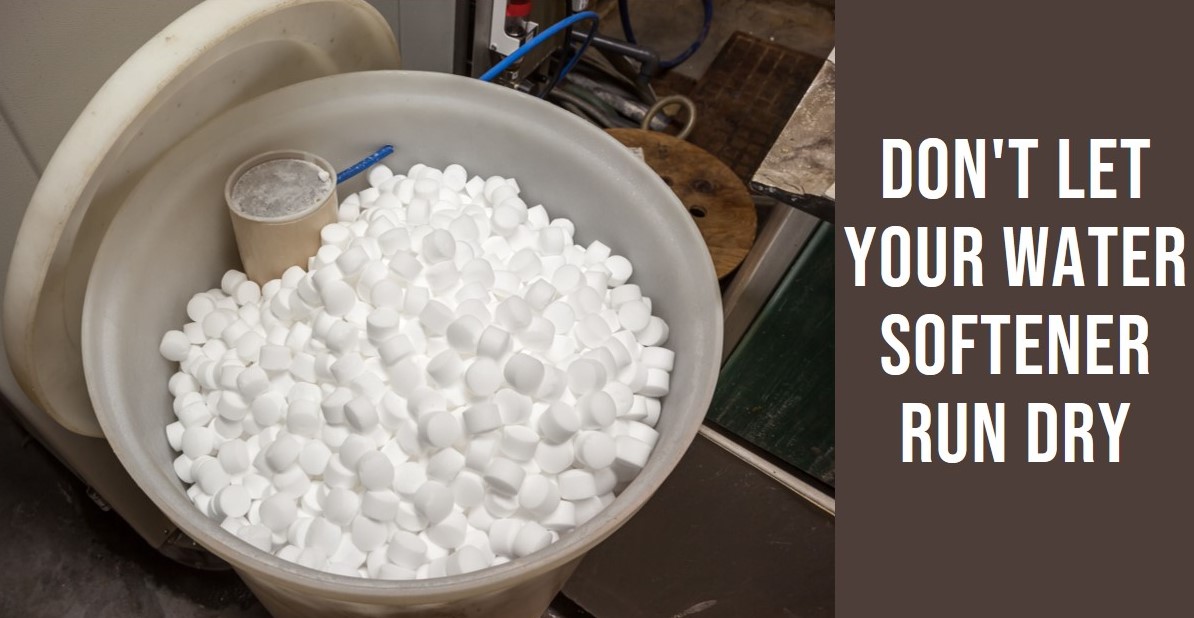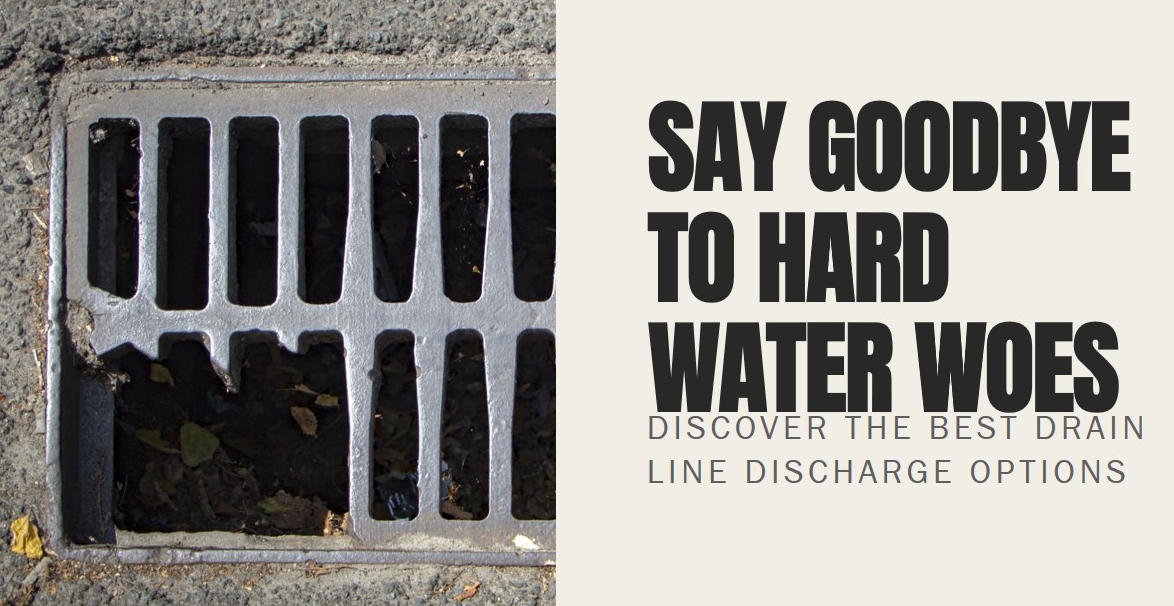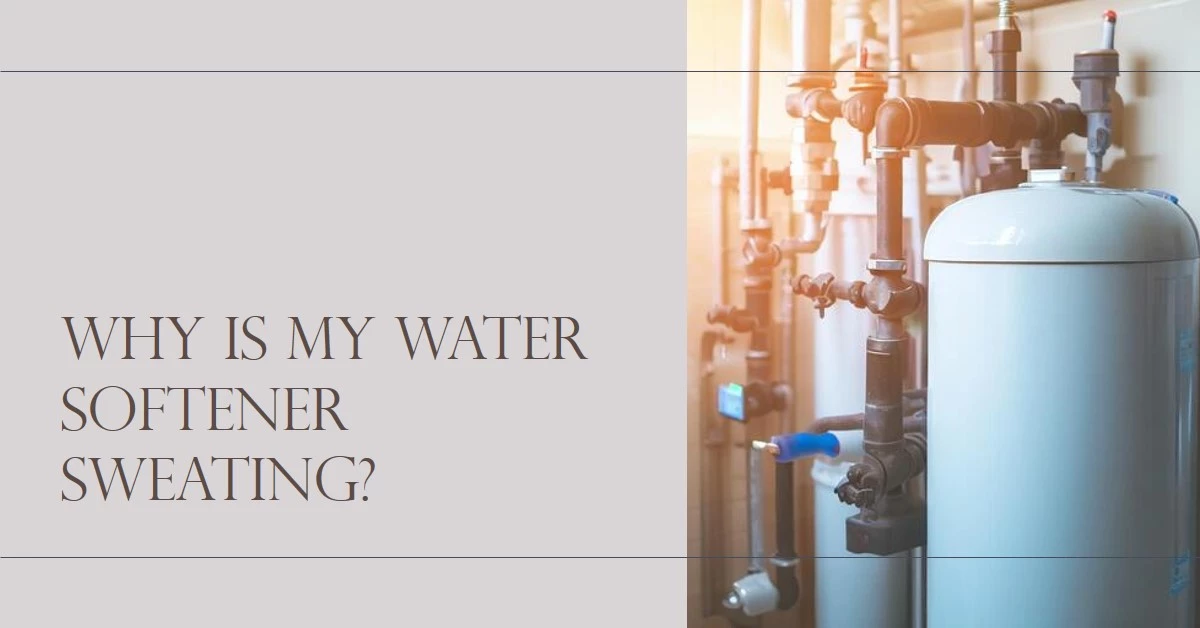If you wake up one morning to find your water softener has run out of salt, you may be wondering what effects this could have and what you should do next. Running completely out of salt can cause major problems with your water quality and appliances. But if acted on quickly, you can get your water softening system back up and running with minimal long-term issues.
This guide will cover everything you need to know about what happens when a water softener has no salt left, how to get it refilled properly, and troubleshooting any problems that occur after depleted salt levels. We’ll also provide tips on preventing it from ever happening again.
How Does a Water Softener Work and Why is Salt Important?
To understand why running out of salt is an issue, it helps to first understand what a water softener does and why salt is crucial to the process.
Water softeners use a process called ion exchange to remove minerals like calcium and magnesium from the water supply. These minerals are what makes water “hard.” The softener contains resin beads that hold onto sodium ions.
As the hard water passes through the tank, the resin beads grab ahold of the calcium and magnesium ions in exchange for sodium. This transforms the hard minerals into harmless sodium salts that are washed away. The beads are left with a buildup of the hard minerals.
Here’s where the salt comes in. The softener goes through a regeneration cycle to refresh the beads and flush away the mineral buildup so they can keep doing their job. A brine solution made from dissolved salt discharges into the tank, removing the hard mineral ions from the beads. The brine and minerals are rinsed away, and the beads are recharged with sodium ions.
Without enough salt, the resin beads become saturated with calcium and magnesium. At that point, they can’t remove any more hard minerals through ion exchange. The softener is essentially useless until more salt can recharge the beads.
The Effects of Your Water Softener Having No Salt
Once the salt supply is completely depleted, your water softener cannot properly condition the water anymore. Here are the potential effects you’ll notice throughout your home:
- Hard water – The softener can no longer remove magnesium, calcium and other minerals. You’ll essentially have untreated hard water pouring from your fixtures once again. This leads to the next issues…
- Spotting and staining – That hard water leaves behind chalky mineral deposits and stains on everything it touches. You’ll see it on faucets, showerheads, sinks, tile and bathtubs first as buildup accumulates with each use.
- Scale accumulation – Hard water minerals start clinging to the insides of your pipes, water heater, and appliances. This scale buildup reduces efficiency and the lifespan of these items.
- Corrosion problems – Hard water is more corrosive, leading to premature rust and damage to plumbing and appliances.
- Salt bridge – Improperly filled salt can solidify into a mass, preventing the brine tank from producing more solution.
- Overflowing tank – Without salt for regeneration, the resin beads remain saturated. If water keeps backwashing into the brine tank, it can overflow.
The severity of these effects depends on factors like how long the salt has been depleted, the hardness of your untreated water, and appliance types. But the bottom line is that running completely empty on salt is problematic for your water quality, plumbing, and appliances.
Preventing Salt Shortages in Your Water Softener
To avoid the headaches of salt outages, the key is preventing them from happening in the first place through proper monitoring and refilling. Here are some tips:
- Check the salt level frequently – Don’t let it get too low before your next refill. Aim to have at least 1/3 of the tank full at all times.
- Follow a refill schedule – Mark your calendar for optimal salt refill intervals based on your household’s water usage. For average use, every 2-3 weeks is a good goal.
- Use the right salt – Ensure you are using pure sodium chloride pellets or crystals. Table salt has additives that can damage the softener. Match the grade of salt to your machine’s specs.
- Break up salt bridges – Use a broom handle to poke holes in any clumped salt, ensuring brine can flow through it.
- Adjust salt dose settings – You may need to increase salt dose to account for heavy water use. Check the manual for programming instructions.
- Inspect for leaks – Drips or leaks in the brine tank will deplete salt reserves faster. Have leaks repaired immediately.
Following these best practices religiously makes it far less likely you’ll ever face an emptied out salt tank again. But if you do find yourself in that situation, here is what to do next.
Refilling the Salt Once Your Softener is Empty
Replenishing your softener with salt to restore normal operation only takes a few steps:
Inspect the Salt Tank
Before adding new salt, check the tank structure and components. Look for signs of leaks, cracks, or malfunctions. If water is still backwashing in without salt, it could overflow. Manually drain the tank if needed before refilling.
Add Salt
Pour or shovel new salt into the brine tank, filling it to the top. Use bagged pellets for easy pouring. Or opt for bulk loose salt for large tanks and heavy usage. Avoid spilling salt in the resin tank next to it when refilling.
Break Up Bridging
Use a broom handle to poke holes and break up any large clumped salt masses. This ensures the brine can still flow evenly through the salt bed.
Initiate Regeneration
Run a manual regeneration cycle to flush the resin beads and recharge them with sodium from the new salt supply. Consult your water softener user manual for how to start this.
Allow Time for Reconditioning
It takes at least 1-2 regeneration cycles for the beads to fully recondition and remove all built-up hardness minerals. You may need to manually regenerate 1-2 more times over the next 1-3 days.
With the tank refilled, your softener will be back on track producing soft water again. But leftover hard water in your pipes and appliances won’t disappear instantly. Here’s how to deal with lingering effects after running out of salt.
Troubleshooting Hard Water Issues After a Salt Shortage
Even once salt levels are restored, you may experience some stubborn hard water issues that built up in your home’s pipes and systems. Here are some steps to remedy problems after salt depletion:
- Use stain removers – For hard water spots and scale on fixtures and surfaces, use vinegar, lemon juice, CLR, Lime-A-Way or another acid-based cleaner to dissolve mineral buildup.
- Deep clean appliances – Inspect dishwashers, washing machines and water heaters for any scale accumulation or corrosion and thoroughly descale and clean them.
- Replace damaged parts – Salt depletion can accelerate wear and damage. You may need new fixtures, valves, supply lines etc if corrosion is severe.
- Install pre-filters – Use pre-softening filters on appliances to deal with temporary hardness issues as your pipes flush out.
- Drain tanks – If your brine or resin tank overflowed from the salt shortage, drain and clean out any saltwater manually using towels and shop vacs.
Within 1-2 weeks of diligent refilling and troubleshooting, your water softener system and water supply should be restored to their normal conditioned state.
Preventing a Repeat Salt Outage in Your Softener
Once is bad enough, but you definitely don’t want to deal with a repeat salt deficiency. Here are some ways to prevent it from happening over and over:
- Set salt refill reminders – Mark your calendar and set automated alerts on your phone to prompt you when it’s time to add more salt.
- Keep backup salt – Have an extra bag or two as reserves so you never fully run out before your next supply order.
- Monitor salt usage – Keep track of how quickly you use salt. Refill more frequently if your household goes through it faster than expected.
- Inspect for leaks frequently – Drips and leaks can siphon away salt without you realizing it.
- Check other malfunctions – Issues like the control valve sticking open can also lead to heavy salt usage. Have your softener serviced if anything seems amiss.
Catching a salt shortage early and troubleshooting diligently minimizes any lasting effects on your home. But staying proactive with salt level monitoring and scheduled refills ensures you’ll never have to worry about it again! Your water softener is a valuable investment for water quality and appliance life, so be sure to give it the care and salt supply it needs.
Frequently Asked Questions About Water Softeners Running Out of Salt
Still have some lingering questions about water softeners and the importance of salt? Here are answers to some common FAQs:
How quickly will my softener malfunction once the salt runs out?
What should I do if my salt forms a hard clump or bridge?
Is it bad if I accidentally get salt in the resin tank when refilling?
How often should my softener regenerate when refilling after a salt outage?
How do I drain brine or resin tanks that overflowed without salt?
Running out of salt in your water softener can spell big trouble for your water quality, appliances, and plumbing system. But with prompt troubleshooting and prevention tactics, you can get your soft water flowing again quickly and painlessly. Use this guide to keep your water softening system in tip-top shape.





